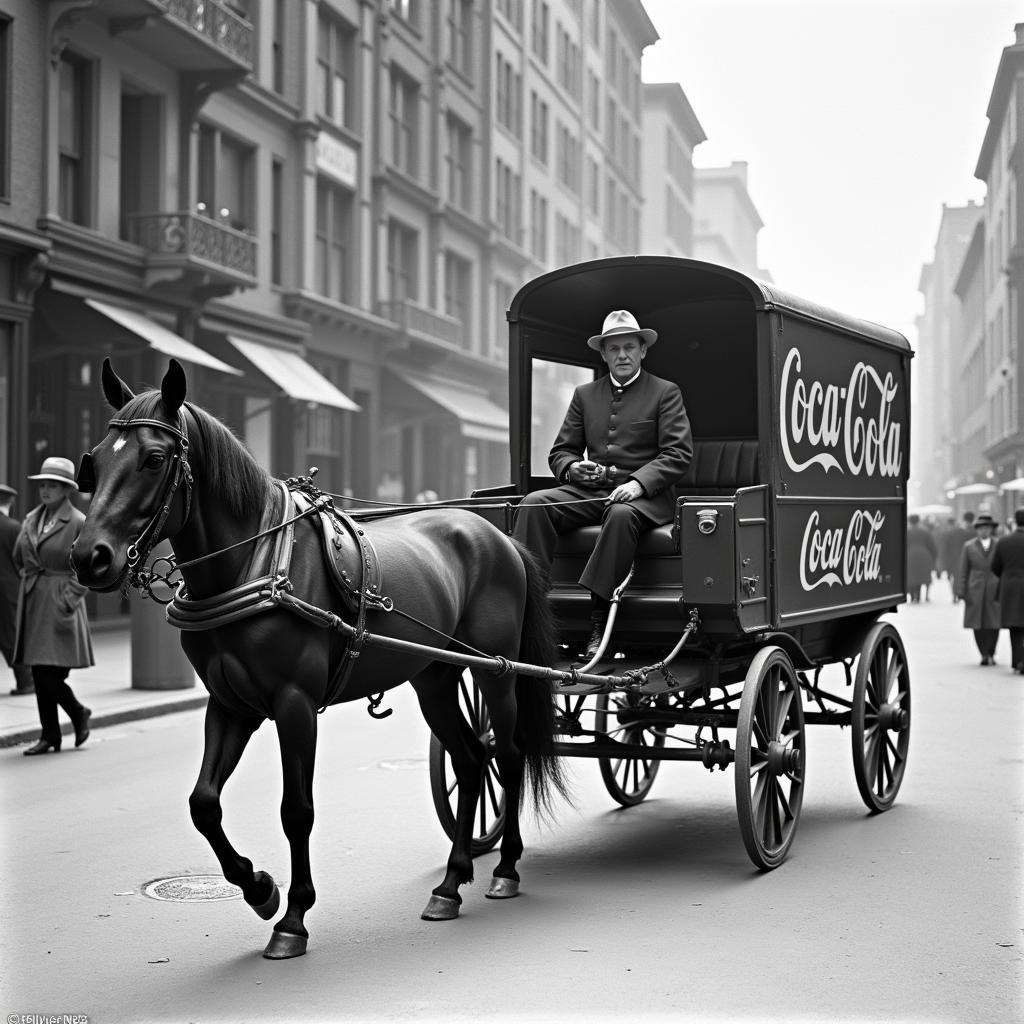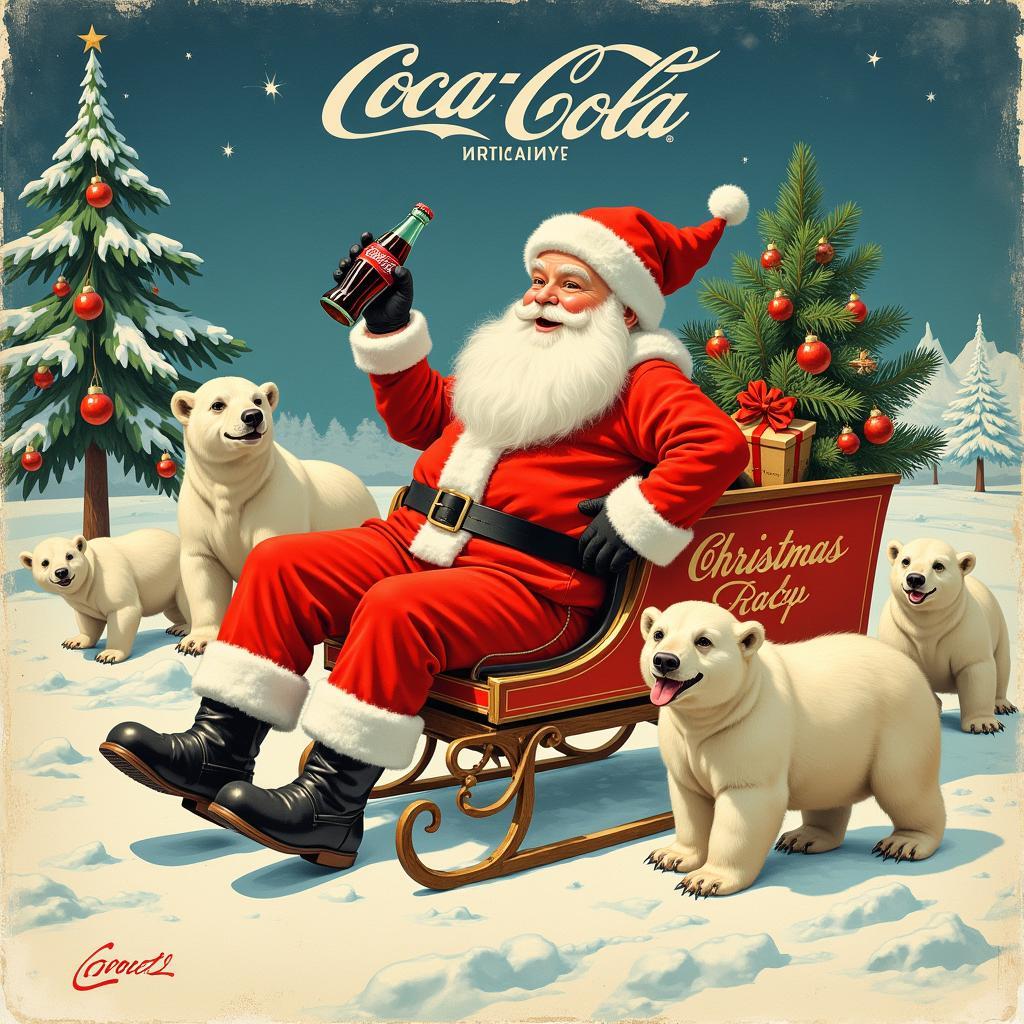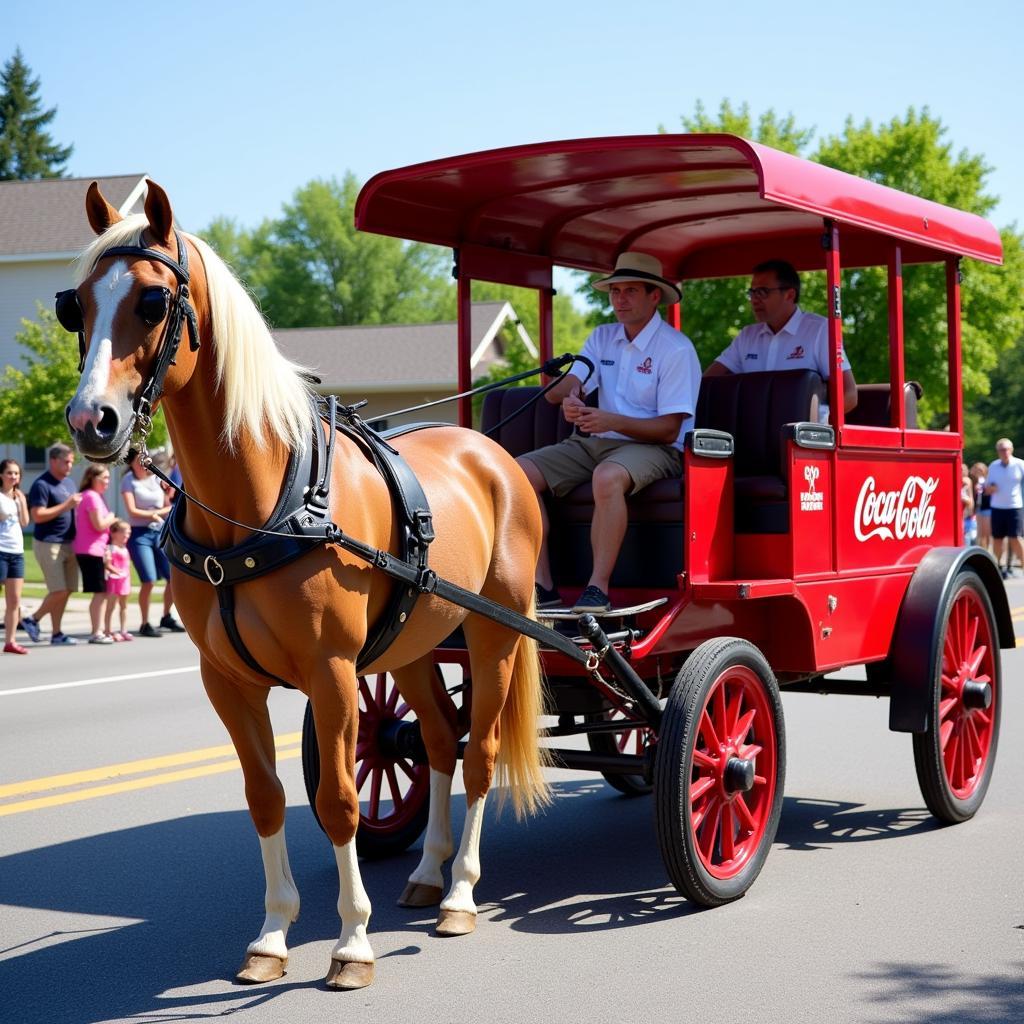The Enduring Appeal of the Coca-Cola Horse and Wagon
October 10, 2024The iconic image of the Coca-Cola horse and wagon evokes a sense of nostalgia and warmth, transporting us back to a simpler time. But why does this particular pairing, a beverage and a mode of transportation, resonate so deeply within our cultural consciousness? Let’s delve into the history and marketing genius behind the enduring appeal of the Coca-Cola horse and wagon.
A Journey Through Time: From Humble Beginnings to Marketing Triumph
 Coca-Cola Horse and Wagon in the 1890s
Coca-Cola Horse and Wagon in the 1890s
The story begins in 1886, just a few years after Coca-Cola was invented. While the beverage was initially marketed as a brain tonic and nerve stimulant, it quickly gained popularity as a refreshing drink. To expand their reach beyond soda fountains, Coca-Cola sought innovative ways to distribute their product. Enter the horse and wagon.
This seemingly simple pairing was a stroke of marketing genius. By deploying horse-drawn wagons adorned with the distinctive Coca-Cola logo, the company achieved several key objectives:
- Increased Visibility: The wagons, often brightly painted and meticulously maintained, became mobile billboards, showcasing the Coca-Cola brand across towns and cities.
- Wider Distribution: Horses could navigate diverse terrains and reach consumers in areas inaccessible to traditional delivery methods, expanding Coca-Cola’s customer base.
- Positive Associations: The horse and wagon imagery subtly linked Coca-Cola with cherished values of tradition, community, and wholesome Americana.
More Than Just a Delivery System: Cementing a Brand Identity
 Coca-Cola Christmas Wagon
Coca-Cola Christmas Wagon
Over the decades, the Coca-Cola horse and wagon evolved from a mere distribution method into a powerful brand symbol. This transition was particularly evident during the holiday season.
The introduction of the Coca-Cola Santa Claus in the 1930s, often depicted arriving in a horse-drawn sleigh laden with gifts and Coca-Cola, solidified the brand’s association with Christmas cheer. The imagery resonated with consumers, further embedding Coca-Cola within the cultural fabric of the holidays.
The Legacy Endures: Nostalgia and the Power of Visual Storytelling
While the days of horse-drawn delivery are long gone, the Coca-Cola horse and wagon continue to hold a special place in our collective memory. The image has transcended its practical origins to become a cultural touchstone, representing simpler times and shared experiences.
This enduring appeal speaks to the power of visual storytelling in branding. By consistently associating their product with positive imagery and emotions, Coca-Cola successfully forged a lasting connection with consumers that continues to resonate today.
 Modern-Day Coca-Cola Wagon
Modern-Day Coca-Cola Wagon
Conclusion: A Timeless Symbol of Refreshment and Tradition
The Coca-Cola horse and wagon is more than a nostalgic image; it’s a testament to the power of effective branding. By harnessing the charm of a bygone era and consistently reinforcing positive associations, Coca-Cola transformed a simple mode of transportation into an enduring symbol of refreshment and tradition. The next time you encounter this iconic image, take a moment to appreciate the marketing ingenuity and cultural significance woven into its enduring appeal.